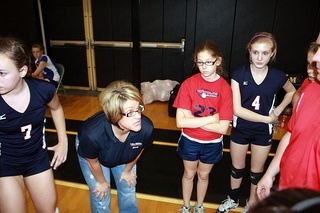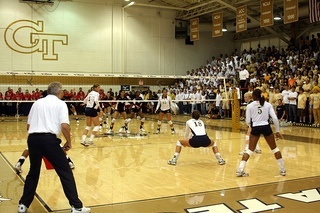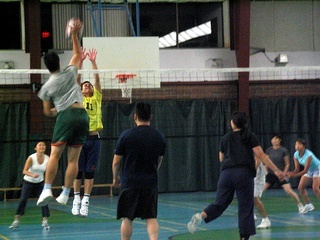Setter training is one of the most critical aspects of having a great volleyball team. Whether you are a player or a coach, this information will help you improve at this very key position and teach you how to work with setters for maximum effectiveness.
There is a very large difference between someone that can set a volleyball and someone that can run the offense. Your task as a coach is to teach your setter how to run the offense as efficiently as possible. As a setter, your job is to own that responsibility and keep the team flowing. These tips will help setters improve and become all that they can be.
Constant feedback is necessary from all levels. Setters must be great at receiving feedback from hitters and coaches. It is also important for the setter to provide feedback to the passers.
 Too frequently, I see coaches and hitters that expect the setter to know where the ball should be and how they are playing. during practice and matches, hitters should provide feedback to the setter as to the last set. Was it too high or too tight to the net? Too wide? The feedback process must be constant in order to achieve optimum results.
Too frequently, I see coaches and hitters that expect the setter to know where the ball should be and how they are playing. during practice and matches, hitters should provide feedback to the setter as to the last set. Was it too high or too tight to the net? Too wide? The feedback process must be constant in order to achieve optimum results.
In football, there are coaches specifically for the quarterback because of the nature of the position. In volleyball, the setter is your quarterback and there needs to be proper support and training for them. As a coach, you need to spend time with the setter reviewing their performance. Were they quick enough to the pass, even when coming from the back row? What was their side out ratio? How were the sets distributed between hitters?
These types of review sessions after each practice and match will be invaluable for your setter training. As a setter, you need to have this mindset of constant improvement and ability to adapt based on this feedback. If your team and coaches do not do this, take it upon yourself as the leader of the team to ask these questions and let them provide feedback.
Avoid the perfect pass syndrome. I see a lot of teams that suffer from the perfect pass syndrome and it hurts their overall offense.
The perfect pass syndrome is when the pass is perfect, the setter will set the ball to their middle hitter on a quick set. If the pass is less than perfect, the ball is going to the outside hitter.
 An offense like this is so predictable and easy for the defense to adjust and get two or even three blockers up. If this is happening, this is not your hitters’ fault. This is an issue with the setter and training is needed.
An offense like this is so predictable and easy for the defense to adjust and get two or even three blockers up. If this is happening, this is not your hitters’ fault. This is an issue with the setter and training is needed.
The setter will be much more deceptive when they learn how to set the middle hitter on a less than perfect pass. In fact, this is one of the skills that defines setter training that was done properly. Being able to distribute the ball from any kind of pass is the mark of an elite setter.
Do drills during practice that will allow the setter to practice setting from less than perfect passes.
Train for the situations. This means you should practice the things that setters find difficult especially at the junior high and high school levels. This would include things like coming from the back row and being in position to set, blocking when they are in the front row, transition from defense to offense, knowing when to set and when to set with the arms (a pass), and setting to the back row attacker.
Many of these situations can be trained and simulated in drills. If you are not working on these tasks during practice, I would recommend adjusting your practice schedule and include many other drills. In fact, you can pick up this ebook with many different drills that teach situational abilities like these.
This is another key part of training your setter. You do not want to have a setter that gets in a match and lacks the ability to handle these situations.
I hope these few points of focus will help you setter training and allow you to reach the highest level of achievement possible.




